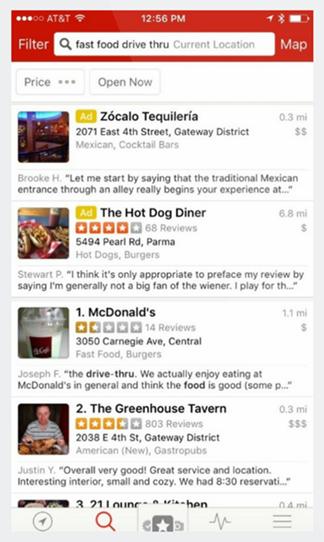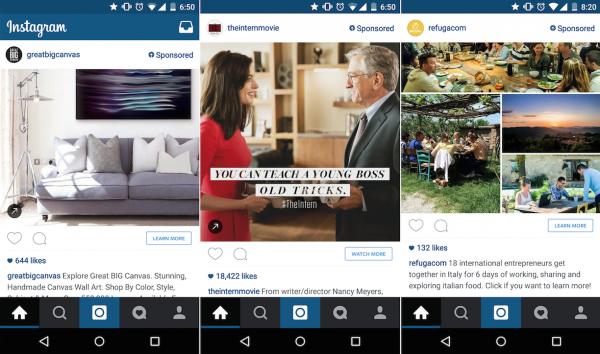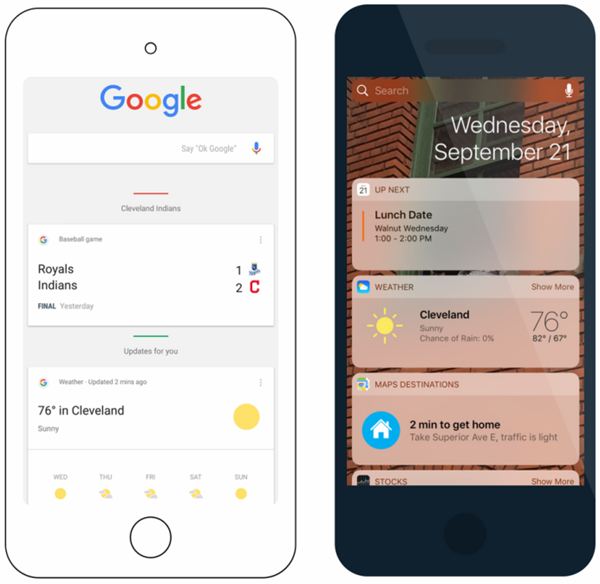Digital is causing the world to shrink. I'm not referring to volume, of course, because in that sense digital is exploding. In fact, as of 2015, 90% of the world's data had been created in the previous two years! What I mean is that the digital and mobile revolution is making us hyper-aware of the world around us.
Said another way, the rise of mobile phones and digital connectivity has increased consumers' expectations of understanding their surroundings. People expect to know everything happening near them—and they use mobile devices to see everything from their physical location, weather, time of day, trending conversations, friend activity, nearby restaurants and shops—right down to local inventory.
Conversely, brands themselves have access to that information, and they have the power to reach potential customers precisely at a time of need. By using that consumer information—location, interests, weather, time, etc.—as well as browsing history, habits of similar customers, tech devices they're using, and more, the mobile revolution has created a powerful new world of marketing—and it's all local (or hyper-local or location-based, depending on your jargon du jour).
Being able to harness that power means being ready for it.
So let's look at four adjustments that global and national brands need to make to seize the opportunity for local digital marketing.
1. Measure online-to-offline traffic
Before now, digital marketing's rapid growth has not forced brands to worry about how much of their digital efforts are driving in-store sales; they have instead focused on optimizing online conversions. However, now that mobile use has outpaced desktop use, brands are finding that looking only at online sales gives them just part of the picture—especially considering e-commerce accounts for only about 5% of all retail transactions.
Does that mean mobile ads or experiences aren't driving sales? Heck no! Brands just need a different way to measure.
"Click-to-brick" can be measured in numerous ways—from Google's in-store measurements to geo-fencing to CRM integrations. Which method is right for your brand depends on different factors; but, no matter what you choose, taking the step to measure online-to-offline consumer traffic is critical.
2. Make sure you're mobile-friendly
Having a mobile friendly website is no longer a nice-to-have; it's required—if for no other reason than the biggest search engines' saying it is.

Source: Moovweb
Google even built a tool to test your site to see whether it holds up to its mobile standards. Plus, data directly proves that mobile-friendly sites are more likely to appear in the top organic search positions.
Search is how people find you. And since mobile searches make up the majority of traffic, you are missing the largest segment of consumers if you're not available for mobile.
Need more proof? Take note of the more than 70% growth in "near me" searches, which further underscores why your brand should focus on local.
3. Experience your brand locally
Have you ever done a search for your own brand? Or followed your own brand's Facebook, Twitter, or Instagram accounts? How about reading the reviews on Yelp about your company?
Surprisingly, I've found that marketing leaders are not doing such basic gut-checks. Instead, they are relying on the strategy of how things were supposed to work when they drew it up in the war room.
Take the following image of a search engine result for "Fast food restaurants near me." There are a few interesting items that make sense as a corporate strategy, but they don't pan out in local execution.

Source: Brandmuscle
Neither of the two ads shown is for a fast-food restaurant. The idea of running Yelp ads is a solid idea; however, the targeting isn't correct. Even if Zocalo is just 0.3 miles away, it is not fast-food ("Tequilería" should be your hint).
The Hot Dog diner is 6.8 miles away. That does not meet my expectations of "near me."
It is possible that these ads are still worth the money if conversions are there; however, I would imagine that if the brands had experienced these ads by searching for themselves, they would opt for some optimization.
On the organic side, the McDonald's location has a 1.5-star review score. Are the people in charge aware of these ratings? Are they doing anything to combat them and increase the score? Being actively involved in community management is something that can be very powerful, and it's pretty cost-effective.
4. Personalize local ads based on context
With the rise of mobile, consumers are expecting brands to understand their situational context and provide a relevant experience based on that context. Someone searching for "running shoes" at 6 PM from a desktop is probably in browsing mode; compare that with someone who does the same search at 6 PM from a mobile phone within a mile of your shoe store.
Only a few years ago, advertisers had access only to the time of day and search term to understand the consumer's context. Today, mobile and local info provides advertisers with much more data. For example...
Facebook allows local business to easily create and launch local contextual ads to drive traffic based on consumers nearby:

Source: Facebook, Neon Retro Arcade and The Peach Truck
Dynamic ad content displayed based on the weather is commonplace:

Source: JCDecaux
Most programmatic ad planners will allow for targeting by location, weather, timing, interests, and past purchases:

Source: Transworld Business
Google Now and Apple iOS give consumers news content, traffic alerts, sports scores and other 'cards' with info relevant to your location and context around you:

Source: Brandmuscle
Google AdWords allows brands to include local inventory into shopping ads:

Source: AdWeek
* * *
Undoubtedly, the world has evolved; it is now a mobile-first world. With that evolution comes an entirely new approach to marketing. For brands to do it right requires a true understanding of local marketing and a shift in focus away from just demographics and DMAs.




